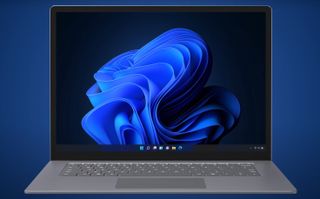Microsoft Details How It Made Windows 11 Faster Than Windows 10
It's not all about how fast your hardware is

Steve Dispensa, Microsoft's VP for the Windows Management team, recently explained some of the under-the-hood changes that make Windows 11 feel snappier, more responsive, and more performant than Windows 10. The video, posted to Microsoft Mechanics YouTube channel, aims to showcase how intricately connected hardware and software are, and the steps that Microsoft took to ensure that Windows 11 improves the user experience.
Windows 11 has an improved resource management system - there are now higher priority levels attributed to foreground functions (essentially, the program window you're currently focused on), reducing the amount of processing power that's eaten up by background processes.
This prioritization of the work that matters to the user at that precise moment in time also extends to browsers, which are notorious resource hogs in any system: Windows now has improved its ability to pause inactive tabs, thus reducing the amount of system resources demanded from the underlying system - and improving performance on your active tab. The improvements here are nothing to scoff at: Steve Dispensa says the system can have 32% less memory usage and reduce CPU utilization by 37% due to this new tab sleeping function.
Microsoft has also optimized the code that calls hardware functions, reducing the delay between user input and the actual instruction being carried out in hardware, thereby reducing idle time and improving user-perceived responsiveness. This also has a knock-on effect on memory usage and overall performance: optimized instructions reduce memory footprint and improve resource handling from idle to active states.
Microsoft also deployed newer compression techniques that reduced overall OS disk usage, and extended this technique to Windows 11's update functions. Due to the new update engine in Windows 11, Microsoft promises that updates won't require as many resources as they currently do. They'll also have feature performance handling and smarter, faster update delivery that reduces the overall size of the Windows update by 40%.
Finally, Steve Dispensa talked a little about how this ecosystem of improvements have led to a sleep state philosophy that's closer to phones and what Apple has done with MacOS, in that resuming from sleep now has seen a 25% improvement which leads, in his words, to a near-instant resume from sleep for most users - with the added benefit of power savings for mobile devices that comes from the ability to enter faster sleep states without compromising on the work that's being carried out.
Stay On the Cutting Edge: Get the Tom's Hardware Newsletter
Get Tom's Hardware's best news and in-depth reviews, straight to your inbox.

Francisco Pires is a freelance news writer for Tom's Hardware with a soft side for quantum computing.
Most Popular





